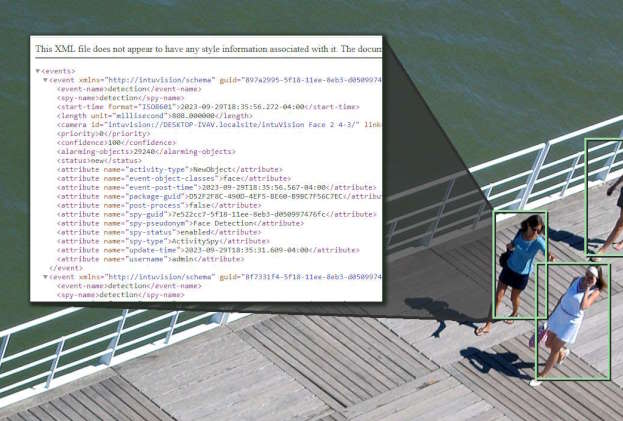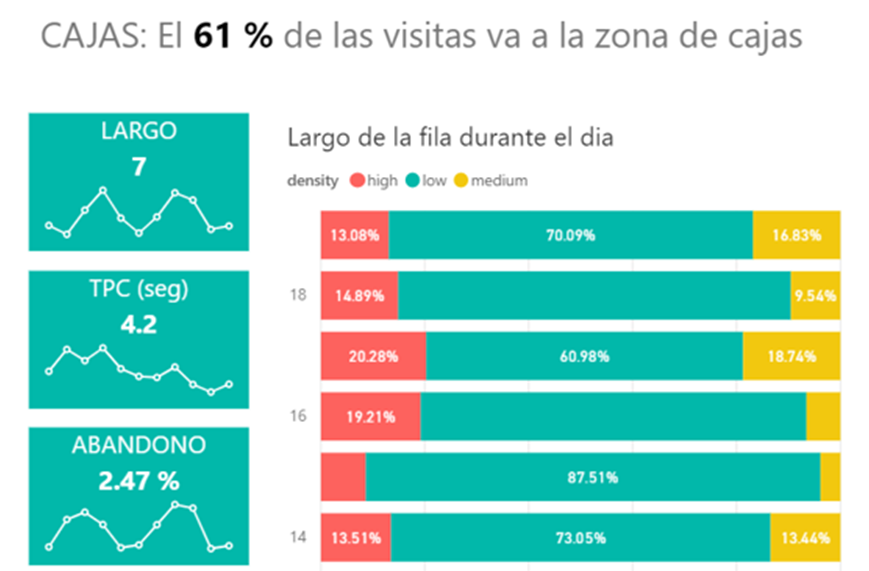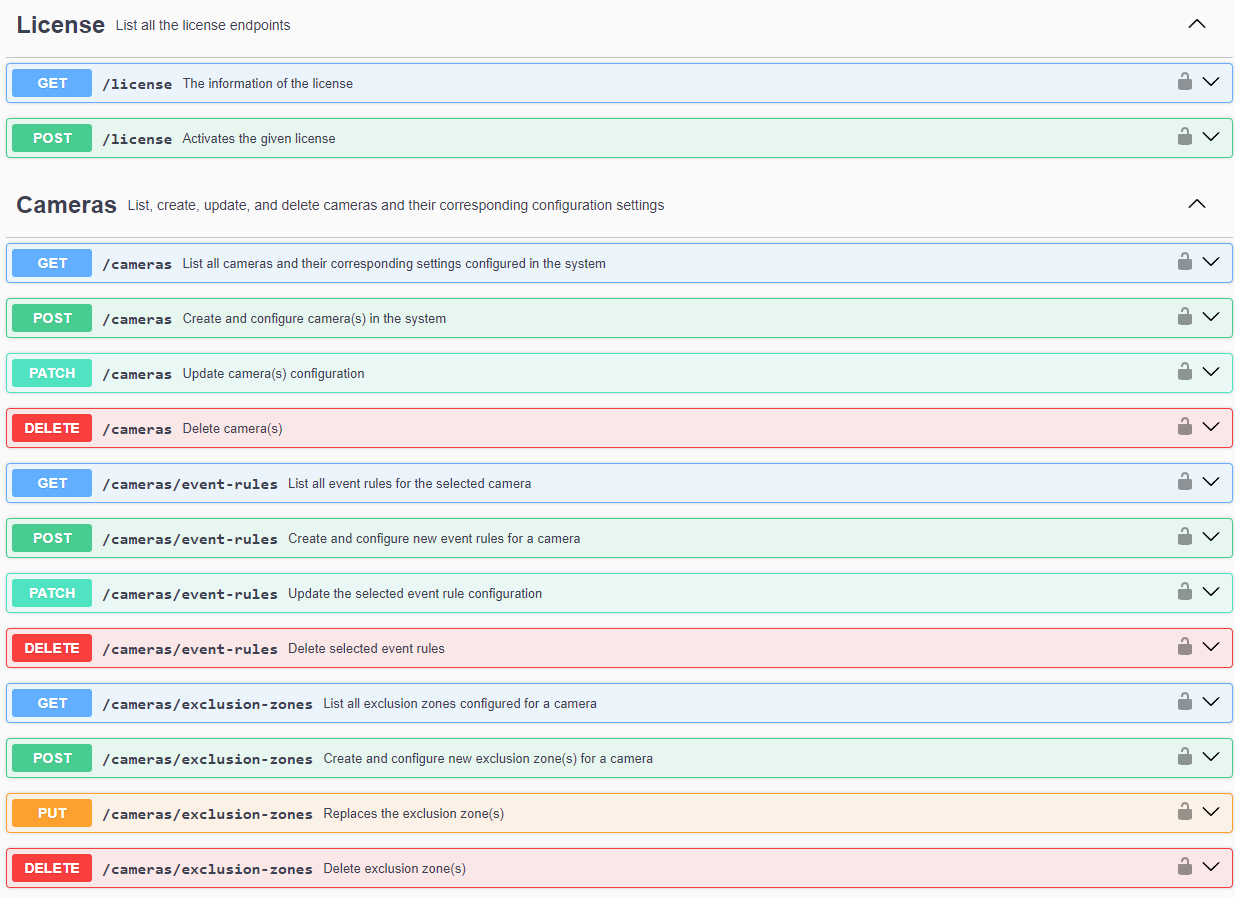intuVision VA API

Building upon the established success and accuracy of the intuVision VA analytics, intuVision VA API enables streamlined deployment of intuVision systems with minimal development work. The API has two separately licensable parts; the Data API, and the Configuration API.
Compatible with all application modules and event types, these enable leveraging intuVision VA's ready-to-deploy capabilities, including broad VMS and video integrations, administrative functions for easy camera & event setup, classification training, and accessing intuVision generated video analytics results within your own dashboards.
Integrating with intuVision VA
intuVision VA’s event and object data is available to 3rd party applications in four efficient ways:
- Through the Web API queries,
- Via HTTPS triggers on select schedules or when events are detected,
- Through ingesting information from third party triggers such as access control or point of sale systems,
- And through configuration of cameras, events, and the intuVision VA system.
This flexibility ensures that intuVision analytics fits in your workflow whether you are looking to pull information or have it pushed to your application.
You can learn more about the trigger options, both sending information out of the intuVision VA system, and ingesting information into intuVision VA, on our Input/Output Triggers page.
intuVision VA Data API
intuVision Data API allows integrators to access rich intuVision VA event detections, metadata, heatmaps, and more, for embedding in 3rd party applications.

Example dashboard created by intuVision customer using the API.
Make your user interfaces your own, offer a user interface in different languages, and still benefit from patented, award winning intuVision algorithms and a comprehensive list of intuVision VA event rules spanning: Parking, Retail, Security, Traffic, Face Detection & Matching, and Text Detection.
Cutting time to market significantly, and minimizing development costs for our partners, intuVision Data API empowers your systems with award winning, patented video analytics. The Data API can be used together with analytics marked-up RTSP video streams - also available from intuVision VA - for a seamless integration.
Results from intuVision detected events can be combined with other data sources, such as point of sale metrics and access control devices to expand the analysis capabilities. All data can then be displayed within 3rd party dashboards, allowing value added integrators to leverage intuVision's robust video analytics, and to provide customized information to end users.
The Data API offers more details and flexibility than HTTPS triggers - providing access to live video, event counts, event details & snapshots, heatmaps, parking occupancy information, and camera status data.
Available queries include:
- Live video: Access live video streams that include object IDs and bounding box information, configure for video, images, metadata, or a combination of these formats.
- Events: Run queries based on cameras, event types, and time periods to retrieve targeted event data.
- Event Details: Get comprehensive information for each event, including start and end times, speed, traffic lane, and other relevant details.
- Event Snapshots: View snapshots captured throughout the life of the event, complete with event zone markup and object bounding boxes for enhanced context.
- Object Classification: Monitor the detected classification type and confidence level for each event. Create additional filtering outside of intuVision VA to categorize classification types.
- Event Counts: Query event counts filtered by camera, event type, and time period, with the ability to separate counts by traffic lanes and object classification type.
- Event details & snapshots: search for detailed information for a specific event. Configurable to return event snapshot or various event details.
- Heatmaps: Generate motion and dwell heatmaps for a time period and camera ID, including a legend for track counts.
- Motion Heatmaps: Visually summarize the object (people or vehicles ) traffic patterns in the scene.
- Dwell Heatmaps: Highlight areas of the scene where people or vehicles stop and wait.
- Parking occupancy: Retrieve parking counts and determine which spots are open or occupied, facilitating easy integration with display devices or parking dashboards.
intuVision VA Configuration API

The API provides the tools needed for automated or semi-automated rollout of intuVision VA systems. From license activation, adding cameras for processing and configuring the analytics, setting up events to monitor, and even managing users and permissions, everything can be achieved through the API.
API functionality includes:
- System License Management: Activate and manage your system license.
- Camera Management: Enable, disable, or delete cameras for analytics processing.
- Camera Stream Configuration: Adjust camera settings such as resolution and frames per second.
- Object Detection and Tracking: Configure camera settings for accurate object detection and tracking.
- Exclusion Zones: Define exclusion zones to block areas of the scene from being processed.
- Advanced Camera Settings: Set up features like stationary object detection and clutter filtering.
- Traffic Lane Setup: Delineate traffic lanes for separating counts, speeds, etc. by lane.
- Event Rule Configuration: Create event rules for all intuVision VA modules, including Parking, Retail, Security, Traffic, Text Detection, and Face Detection & Matching.
- Event Customization: Configure events with specific settings, including adjustments to event zones.
- Alarm Schedules: Establish alarm schedules and manage override dates/times.
- Classification Model Training: Remotely collect samples, and train classification models.
- Classification Model Transfer: Copy training samples and classification models between cameras.
- Classification Model Customization: Tailor classification models for specific camera views.
- User Management: Add new users and configure their roles and permissions.


